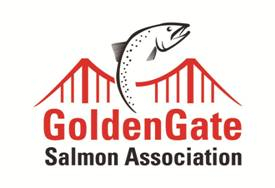This spring, many loving parents will give their graduates a check, a hug, a copy of "Oh the places you'll go!" and send them on their way into the big wide world. In California this year, the scientists who have lovingly hatched salmon smolts will go to great lengths to make sure their babies make it to the big blue sea.
As a result of a 2014 drought, the Golden Gate Salmon Association pleaded with state and federal officials to aid the small fry from the Coleman National Hatchery in their trek from the upper Sacramento River to San Francisco Bay. The U.S. Fish and Wildlife Service (which runs Coleman) has agreed to transport as many as 12 million of its juvenile salmon to the bay or the western delta unless drought conditions improve significantly by the release dates in April, May and June.
The plan is based on the status quo of state-operated hatcheries, which regularly cart their salmon babies to the bay and delta for release; the state has committed to moving even more via tanker truck this year because of drought conditions in Central Valley rivers.
“As more and more fresh water is extracted from the Sacramento River and Delta for delivery to San Joaquin Valley agribusiness, the salmon’s migration corridor downstream and through the Bay-Delta estuary has become a deadly gauntlet,” said GGSA vice chairman Zeke Grader, who is also the executive director of the Pacific Coast Federation of Fishermen’s Associations. “Add drought and the Central Valley rivers and Delta become virtually impassable for salmon.”
California’s salmon industry is valued at about $1.4 billion annually, and hatchery salmon could make up most of the 2016 harvest, when those fish mature.
These fingerlings are no small potatoes. Here's hoping they survive the journey.







